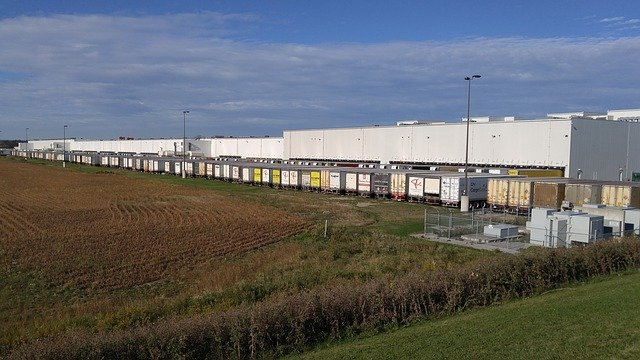

Heavy haul transportation is a specialized form of freight shipping used to move oversized loads. Such shipments require special equipment and careful planning, as they often exceed standard carriers’ weight and length limitations. Heavy haul transports are used for everything from large machinery to heavy construction materials and entire buildings.
The process of heavy haul transportation can be broken down into four main steps: Planning, preparation, transportation, and delivery.
Planning
Planning involves identifying the shipment’s nature and determining its proper route, which includes choosing an appropriate carrier based on their capabilities, such as flatbed or lowboy trailers with different size restrictions and features suitable for moving large objects. It also involves calculating the weight and size of the load to properly determine the shipping cost.
Preparation
Once the planning stage is complete, it’s time to prepare the shipment for transport, including disassembling or wrapping items, applying safety measures such as strapping and blocking, and loading them onto the carrier. The choice of the carrier also affects preparation; flatbed trailers require different preparations than lowboy trailers, for example. In some cases, acquiring additional equipment, such as a crane or special winches, may be necessary.
Transportation
The actual transportation usually involves multiple steps over long distances. Depending on the size of the load, this may involve more than one type of vehicle or even two carriers working together in tandem. To ensure safety, the route must be adequately planned and documented ahead of time. The carrier is responsible for complying with local regulations for safe transportation and taking appropriate measures to protect the load from damage during transit.
Delivery
Upon arrival at its destination, the heavy haul shipment must be offloaded with extra care and attention. It usually requires special equipment such as cranes or winches and should always involve a team of experienced professionals trained in proper handling techniques. Depending on the size of the shipment, additional preparation may be necessary before it can enter its final destination.
How does heavy haul transportation work?
Heavy haul transportation is a complex process; it involves multiple steps requiring careful planning and execution. Choosing an experienced carrier, you can trust to provide the necessary equipment and safety measures for successful delivery is essential. With the right partner, it’s possible to transport oversized loads safely and efficiently with minimal risk of damage or delays.
Heavy haul transportation is an invaluable service for industries that need to move large items quickly and securely. By following these steps and partnering with reliable rv transport companies, you can ensure your shipment reaches its destination on time and without any problems.
What are the benefits of using heavy-haul transportation?
There are many benefits of using heavy haul transportation. Large items can be shipped safely and efficiently, often with a shorter turnaround than traditional shipping methods. It also eliminates the risk of damage due to improper handling or accidental misplacement, as special safety measures and equipment are used throughout the process.
Finally, it’s cost-effective; while it may be more expensive upfront than standard freight shipping, it often saves money by reducing delays and unforeseen costs associated with damaged goods or lost shipments.
What are the risks of using heavy haul transportation?
Heavy haul transportation can present some serious risks if not handled properly. Large and heavy items are often difficult to maneuver, and take extra care in loading and unloading, so it’s essential to have experienced professionals with proper training and the right equipment from start to finish.
Another risk is overloading the trailer or vehicle, which could cause a breakdown or an accident, resulting in costly damages or even loss of life. It’s important to follow regulations for vehicle weight limits and safety standards when transporting large items. Additionally, some carriers may be limited in size or weight capacity, so choosing the right type of carrier for the job is essential.
In addition to on-road risks, theft is potential while the shipment is en route, which can be mitigated by using secure tracking devices, which allow carriers to know where their shipments are at all times. Furthermore, drivers should be thoroughly checked before hiring and held accountable for discrepancies in their reported location during transit.
Bad weather can be a significant issue regarding heavy haul transportation. Inclement weather can cause delays and damage to loads due to road conditions such as flooding or extreme temperatures. To avoid these issues, carriers should plan their routes carefully and only travel when conditions are favorable enough to do so safely.
Conclusion
Heavy haul transportation is essential for industries that need to move oversized loads. The process involves careful planning and preparation, a suitable carrier, a well-planned route, and experienced professionals who can safely unload the shipment on arrival. With the right partner, you can ensure your oversized load arrives at its destination safely and on time.




